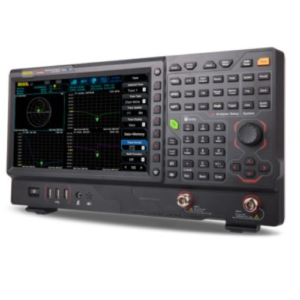In the world of electronics and communication, precision testing tools are essential for learning, development, and innovation. Among these, the best Spectrum Analyzer stands out as a critical device in educational and industrial environments. Whether you’re equipping a school lab, a college training facility, or an industrial R&D setup, investing in a high-quality spectrum analyzer can dramatically improve the accuracy, performance, and understanding of complex signal behavior.
Let’s explore why spectrum analyzers are important, what features to consider, and how different sectors benefit from using them.

What is a Spectrum Analyzer?
A spectrum analyzer is an electronic instrument that measures the magnitude of input signals versus frequency within the full frequency range of the instrument. It displays signal amplitude on the vertical axis and frequency on the horizontal axis. This helps identify and analyze various signals such as noise, distortion, modulation, and bandwidth.
In simpler terms, a spectrum analyzer tells you what frequencies are present in a signal and how strong they are—a crucial insight for anyone working with RF (radio frequency), audio signals, or electronic circuits.
Why Schools and Colleges Need the Best Spectrum Analyzer
1. Enhancing Practical Learning
For schools and technical colleges offering courses in electronics, telecommunications, and embedded systems, a spectrum analyzer bridges the gap between theoretical learning and practical understanding. Students can visualize frequency spectra, detect interference, and test RF circuits in real time.
2. Supporting Skill Development
Hands-on experience with the best spectrum analyzer prepares students for careers in RF design, testing, and communications. Educational institutions that incorporate signal analysis tools into their curriculum produce industry-ready graduates.
3. Ideal for STEM Labs and Research
Engineering colleges involved in academic research or final-year projects often require signal analysis tools. A good spectrum analyzer supports advanced experimentation, including antenna design, filter response, and signal integrity.
Importance of Spectrum Analyzers in Industry
1. Essential for RF and Communication Testing
Industries involved in wireless communication, broadcasting, and IoT rely heavily on spectrum analyzers. They are used to test signal purity, ensure compliance with frequency standards, and debug transmission issues.
2. Product Design and Validation
When designing circuits or RF modules, engineers use spectrum analyzers to verify signal behavior, identify harmonic distortion, and fine-tune components. Selecting the best spectrum analyzer ensures high accuracy and faster product development.
3. Maintenance and Troubleshooting
From diagnosing faulty RF equipment to monitoring EMI (electromagnetic interference), spectrum analyzers are indispensable tools for maintenance teams across industrial setups. High-resolution tools provide actionable insights, reducing downtime and improving reliability.
How to Choose the Best Spectrum Analyzer
With a range of options available, it’s important to identify the key features needed in educational and industrial settings.
1. Frequency Range
For basic education purposes, a frequency range up to 3 GHz is usually sufficient. However, for advanced research or industrial use, analyzers supporting 6 GHz or higher are more suitable.
2. Resolution Bandwidth (RBW)
A finer RBW enables detection of closely spaced signals. The best spectrum analyzers offer adjustable RBW settings, ideal for both learning and diagnostics.
3. Display and Interface
A user-friendly display, preferably with touchscreen capability, improves usability. For students and new users, intuitive navigation makes learning more effective.
4. Portability and Size
Compact spectrum analyzers are great for mobile testing, fieldwork, or classroom demonstrations. For industries, benchtop models with extended functionality are more appropriate.
5. Connectivity and Data Logging
Look for models that support USB, LAN, or wireless data transfer. Being able to store and analyze data later is particularly useful for educational assessments and industrial reporting.
Applications in Education and Industry
In Schools & Colleges:
Demonstrating signal frequency and amplitude
Teaching amplitude modulation (AM) and frequency modulation (FM)
Studying signal interference and harmonics
Supporting electronic and communication experiments
In Industry:
Spectrum monitoring and interference analysis
Testing wireless communication protocols (Wi-Fi, Bluetooth, LTE)
Measuring spurious emissions and signal quality
RF equipment calibration and troubleshooting
Secondary Tools to Use with Spectrum Analyzers
While selecting the best spectrum analyzer, consider integrating it with other educational or industrial instruments such as:
Signal Generators – to produce test signals
Oscilloscopes – for time-domain signal analysis
Attenuators and Mixers – to handle signal conditioning
Software suites – for extended analysis and simulation
This integration not only enhances the learning process but also replicates real-world industry testing environments.
Summary: Invest in Learning, Accuracy, and Innovation
Whether you’re a school upgrading your STEM lab, a college building an electronics department, or an industrial facility focused on quality assurance, investing in the best spectrum analyzer is a decision that drives results.
With benefits spanning from foundational learning to cutting-edge diagnostics, spectrum analyzers serve as a backbone in any serious electronic or communication setup. Choose one with the right balance of features, durability, and support to ensure long-term value.